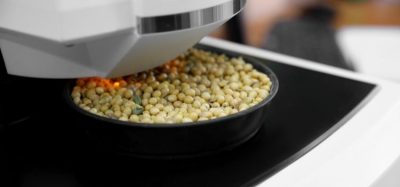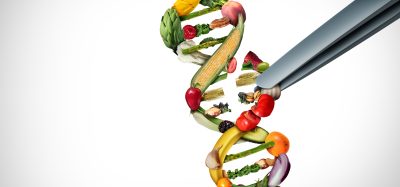Comparison of sensory methods
- Like
- Digg
- Del
- Tumblr
- VKontakte
- Buffer
- Love This
- Odnoklassniki
- Meneame
- Blogger
- Amazon
- Yahoo Mail
- Gmail
- AOL
- Newsvine
- HackerNews
- Evernote
- MySpace
- Mail.ru
- Viadeo
- Line
- Comments
- Yummly
- SMS
- Viber
- Telegram
- Subscribe
- Skype
- Facebook Messenger
- Kakao
- LiveJournal
- Yammer
- Edgar
- Fintel
- Mix
- Instapaper
- Copy Link
Posted: 20 June 2016 | Michael Bryanton, Research and Development Chef, Canada’s Smartest Kitchen, The Culinary Institute of Canada | No comments yet
There are a number of sensory methods to determine with statistical relevance whether or not consumers will notice a difference between a current formulation and a new one. Each sensory method has advantages and disadvantages, including the sensitivity of the method, which determines the number of judges necessary, and the number of samples necessary to perform the test.


There are a number of reasons why a product may change including, but not limited to, new sources of raw ingredients; reformulation for cost reduction; reformulation to reduce a component with a negative consumer perception – i.e., sodium, fat, sugar etc. – and even a change in packaging which could affect the product.
Manufacturers generally want these changes in products to be as seamless as possible without a noticeable impact on the consumer’s perception of the product.
There are a number of sensory methods to determine with statistical relevance whether or not consumers will notice a difference between a current formulation and a new one. Each sensory method has advantages and disadvantages, including the sensitivity of the method, which determines the number of judges necessary, and the number of samples necessary to perform the test.
Tests can use as few as two samples in the case of a paired comparison, or as many as four in a Tetrad test. The Tetrad test is the newest methodology and in theory is more sensitive than other tests, such as the triangle or duo-trio tests. More testing is still required before it can be said with confidence that the theory translates into real world results. One reason for this is that while a triangle test or duo-trio test presents three samples to the judges, the tetrad test presents four samples. It is possible that this fourth sample could cause some taste fatigue or loss of taste memory between first and last samples, which would result in a weakening of the test. This is particularly true in strongly flavoured and spicy foods.
The ultimate goal on the part of the manufacturer is to choose a test that is most effective for their product and also keeps testing costs to a minimum. If a test can be performed on a product using a smaller judging panel the manufacturer will save money.
We chose two sensory methods for comparison; the Tetrad test and the Duo-Trio test. Two products were chosen for the testing; one with a very neutral flavour profile, cottage cheese, and one with a complex flavour profile, coffee. Sixty judges were used for each test.
Testing was performed using a panel of judges from the general population with no demographic targeting. These were central location tests utilising the sensory evaluation lab located at Canada’s Smartest Kitchen in Charlottetown, Prince Edward Island.
The lab utilises six sensory booths each equipped with a Dell All-In-One touch screen computer running SIMS Sensory Software. Each booth was lit with full spectrum LED lighting. Booths are designed to limit external sensory input and communication between judges. Booths adhere to ISO 8589:2007 general guidance for the design of test rooms. The sensory lab is equipped with an independent air exchange system to maintain air quality and minimise external odours. The room temperature is maintained at 20˚C during testing.
Tests
Duo-Trio Test
With this test a judge is presented with two coded samples and a reference sample. The reference sample can be blank or labeled REF. The two coded samples include one sample that is identical to the reference and one that is the new formulation.
The samples can be presented as Constant or Rotated. With the constant presentation the reference sample remains the same for all judges. With the rotated presentation the reference can be either the original sample or the reformulated sample. In a rotated presentation the reference sample is presented an equal number of times to the judging panel. For instance, with a panel of 60 judges, 30 judges will receive the original formulation as the reference and 30 judges will receive the reformulated sample as the reference. The codes samples are also distributed in four blocks evenly among the judges. (Possible block combinations are 1-2-1, 2-1-2, 1-1-2, and 2-2-1). After being presented with the samples the judges are asked to taste all three samples in order and indicate which coded sample they believe matches the reference sample.
Tetrad Test
The tetrad test is a newer discrimination test that presents four coded samples to the judges. Two samples are from group A (control) and two samples are from group B (new formulation). The samples are presented in one of six possible blocks distributed evenly amongst the judges. (Possible block combinations AABB, BBAA, ABAB, BABA, ABBA, BAAB).
Judges in this test are presented with the four samples in one of the block orders and asked to group the samples into two groups based on similarity, a group of two and another group of two.
Samples
The samples were identified to represent two very different sensory effects. With this study being limited in scope, the goal was to get data on a mild flavoured product and a more robust and complex product to see if that difference in flavour intensity has an effect on which method of evaluation is chosen. The product samples have to be different but close enough to make detection difficult.
Cottage Cheese
A national name brand cottage cheese was chosen with a 1% milk fat level and the same brand with a 2% milk fat level. Both samples had the same expiry date and were purchased in the same 500ml container size. 20g of the cottage cheese was presented in a 70ml semi opaque plastic cup. The samples were served at 6˚C. Judges were also provided with a glass of filtered water at 10˚C to refresh their palate between samples or as needed.
Coffee
For our tests coffee was flavoured with two levels of 17% coffee creamer. The coffee was brewed with 70g of ground dark roast coffee and 1800g of water. Brewing temperature was 85˚C. The control sample of coffee had coffee creamer added at a level of 100g per 1000g of brewed coffee (10%). The test sample of coffee had coffee creamer added at level of 85g per 1000g of brewed coffee (8.5%). This represents a 15% difference in the volume of cream between the samples. 60ml of each coffee was presented in a 70ml semi opaque plastic container for sampling. Serving temperature of the coffee was 75˚C. Judges are also provided with a glass of filtered water at 10˚C to refresh their palate between samples or as needed.
Duo-Trio Test Results
60 judges participated in this test. 35 judges (58.3%) were female and 25 judges (41.7%) male. Table 1 (page 00) shows the age break down of the judging participants.
Test results data after the first 30 judges for Cottage Cheese:
Test results data after 60 judges for Cottage Cheese:
Test results data after the first 30 judges for Coffee:
Test results data after 60 judges for Coffee:
Test Comprehension:
Judges were asked to indicate Yes or No whether or not they fully comprehended what was being asked of them in this test. 60 judges or 100% indicated that they did fully comprehend what was being asked of them.
Tetrad Test Results
60 judges participated in this test. 36 judges (60%) were female and 24 judges (40%) male. Table 2 (page 00) shows the age break down of the judging participants.
|
AGE |
||
|
|
Frequency |
Percent |
|
Over 59 |
22 |
36.7 |
|
50-59 |
13 |
21.7 |
|
40-49 |
10 |
16.7 |
|
30-39 |
7 |
11.7 |
|
19-29 |
8 |
13.3 |
Test results data after the first 30 judges for Cottage Cheese:
Test results data after 60 judges for Cottage Cheese:
Test results data after the first 30 judges for Coffee:
Test results data after 60 judges for Coffee:
Test Comprehension:
Judges were asked to indicate Yes or No whether or not they fully comprehended what was being asked of them in this test. 60 judges or 100% indicated that they did fully comprehend what was being asked of them.
Summary
30 Judges Duo-Trio
30 Judges Tetrad
60 Judges Duo-Trio
60 Judges Tetrad
In our testing the Tetrad method showed more accuracy when testing for similarity of 1% milk fat and 2% milk fat cottage cheese at both the 30 judge response level and the 60 judge response level. The results of the Duo-Trio test indicate a false match in these tests while the Tetrad tests showed a low probability of a match.
Conversely, the Duo-Trio method showed more accuracy when testing for similarity of coffee with a 10% addition of 17% coffee creamer and an 8.5% addition of 17% coffee creamer at both the 30 judge response level and the 60 judge response level.
The numbers are not definitive in terms of the number of judges required but if they were to hold true over multiple tests it could be reasoned that the Tetrad test is more effective with mild flavoured food products but not necessarily with more complex flavour profiles. This same conclusion prevails in similar tests that have compared the Tetrad method with a Triangle test. This could be some evidence that the theory that an extra sample can lead to taste fatigue is true and ultimately the statistical advantage of the Tetrad test can be offset when the samples are strongly flavoured.
About the author
Michael Bryanton is a Research and Development Chef at Canada’s Smartest Kitchen in Charlottetown, Prince Edward Island. After graduating from the Culinary Institute of Canada Michael worked in locations across Canada before moving South to work in the Caribbean and the U.S. eventually becoming a partner in a restaurant group in the Cayman Islands. Michael returned to Canada in 2002 as a Culinary Arts Instructor at the Culinary Institute of Canada specialising in International Cuisine and Culinary Trends. In 2010 Michael moved on to become a Food Product Developer with Canada’s Smartest Kitchen. During this time he has received an Applied Degree in Culinary Operations from Holland College and certification in Sensory and Consumer Sciences from the University of California, Davis.









